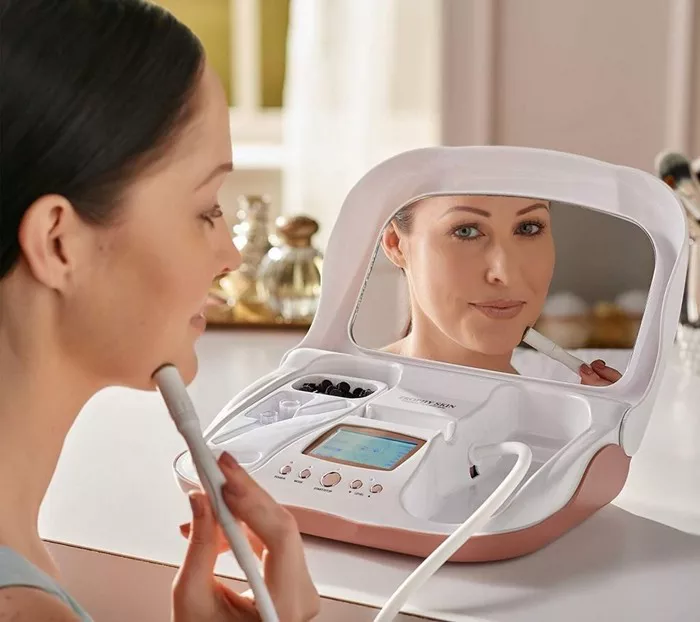Microdermabrasion is a popular cosmetic procedure that involves using a device to exfoliate the outermost layer of the skin. It is often used to improve the appearance of fine lines, wrinkles, and acne scars. Retinol, on the other hand, is a type of vitamin A that is commonly used in skincare products to help reduce the appearance of fine lines and wrinkles. But is it safe to use retinol after microdermabrasion? In this article, we will explore this question in depth and provide you with all the information you need to know.
Understanding Microdermabrasion
Microdermabrasion is a non-invasive cosmetic procedure that involves using a device to exfoliate the outermost layer of the skin. This device typically uses tiny crystals or a diamond-tipped wand to remove dead skin cells and other debris from the surface of the skin.
Microdermabrasion can be used to improve the appearance of fine lines, wrinkles, acne scars, and hyperpigmentation. It can also help to stimulate collagen production, which can improve the overall texture and tone of the skin.
The Procedure of Microdermabrasion
Microdermabrasion is typically performed in a dermatologist’s office or a medical spa. The procedure usually takes about 30 minutes to an hour, depending on the size of the area being treated.
Before the procedure, the skin is cleansed and dried. Then, a handheld device is used to exfoliate the skin. The device typically uses tiny crystals or a diamond-tipped wand to remove dead skin cells and other debris from the surface of the skin.
After the procedure, the skin may be red and sensitive, and it may feel tight and dry. However, these side effects usually subside within a few hours to a day.
Is it OK to Use Retinol after Microdermabrasion?
Now, let’s get to the question at hand: is it safe to use retinol after microdermabrasion? The answer is that it depends on a few factors.
Firstly, it is important to note that microdermabrasion can cause some irritation and sensitivity in the skin. This is because the procedure removes the outermost layer of the skin, which can leave it vulnerable to irritation and damage.
Retinol, on the other hand, can also cause irritation and sensitivity in the skin, especially if it is used in high concentrations or too frequently. This is because retinol works by increasing the turnover of skin cells, which can cause some redness and flaking.
So, while it is technically safe to use retinol after microdermabrasion, it is important to be cautious and to use it correctly.
Tips for Using Retinol after Microdermabrasion
If you want to use retinol after microdermabrasion, here are some tips to keep in mind:
Wait a few days: It is best to wait a few days after microdermabrasion before using retinol. This will give your skin time to heal and recover from the procedure.
Start with a low concentration: If you are new to retinol, start with a low concentration (around 0.5%) and gradually increase it over time.
Use it sparingly: Only use retinol once a day, at night, and only apply a small amount to your face.
Moisturize: Retinol can be drying to the skin, so it is important to use a moisturizer after applying it.
Use sunscreen: Retinol can make your skin more sensitive to the sun, so it is important to use a sunscreen during the day.
Alternatives to Retinol
If you are concerned about using retinol after microdermabrasion, there are other alternatives that you can consider. Here are some options:
Vitamin C: Vitamin C is a powerful antioxidant that can help to brighten the skin and reduce the appearance of fine lines and wrinkles.
Peptides: Peptides are small chains of amino acids that can help to stimulate collagen production and improve the overall texture and tone of the skin.
Hyaluronic acid: Hyaluronic acid is a hydrating ingredient that can help to plump up the skin and reduce the appearance of fine lines and wrinkles.
Niacinamide: Niacinamide is a form of vitamin B3 that can help to improve the appearance of hyperpigmentation and fine lines.
Conclusion
In conclusion, microdermabrasion is a popular cosmetic procedure that can help to improve the appearance of fine lines, wrinkles, and acne scars. Retinol, on the other hand, is a type of vitamin A that is commonly used in skincare products to help reduce the appearance of fine lines and wrinkles.
While it is technically safe to use retinol after microdermabrasion, it is important to be cautious and to use it correctly. If you are new to retinol, start with a low concentration and only use it once a day at night. It is also important to wait a few days after microdermabrasion before using retinol and to use a moisturizer and sunscreen to protect your skin.
If you are concerned about using retinol after microdermabrasion, there are other alternatives that you can consider, such as vitamin C, peptides, hyaluronic acid, and niacinamide.
Remember, everyone’s skin is different, so it is important to consult with a dermatologist to determine the best skincare regimen for your individual needs.

